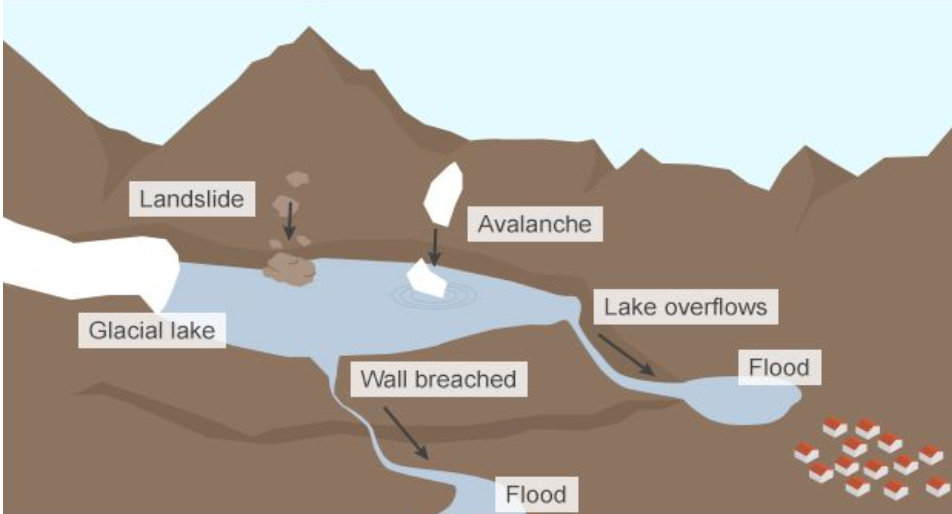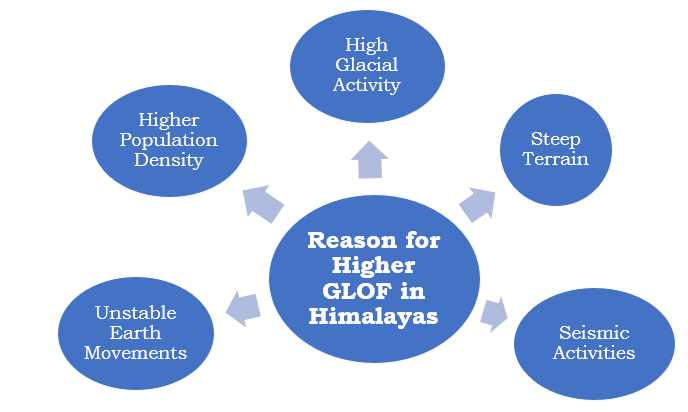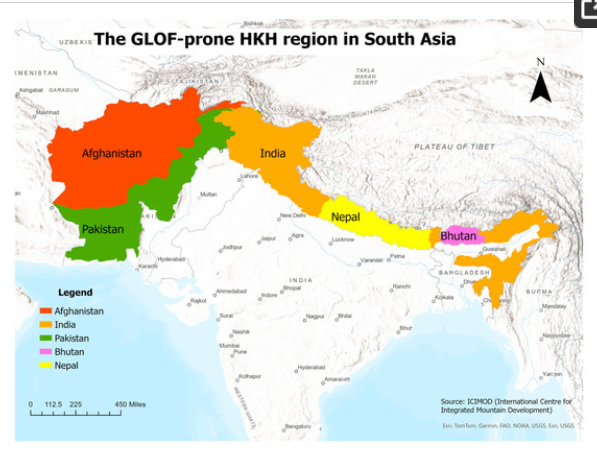Mains: GS-I Important Geophysical Phenomena such as earthquakes, Tsunami, Volcanic activity, cyclone etc.
GS-III- Disaster and Disaster Management.
Why in news?
Recently scientists from the International Centre for Integrated Mountain Development (ICIMOD) found that supraglacial lake melting is also a reason for glacial lake outburst.
What are glacial lake outbreak floods?


What are its causes?
Permafrost is any type of ground from soil to sediment to rock that has been frozen continuously for a minimum of two years

|
Challenges in identification of dangerous lakes |
|
What are the steps taken by India to prevent GLOFs?
What measures can be taken?
Potentially dangerous Glacial lakes can increase the vulnerability of GLOF. Nepal has 25, Tibet autonomous region of China has 21 and India has 1 potentially dangerous Lake.
|
Hindu Kush Himalayan Region |
|
Reference